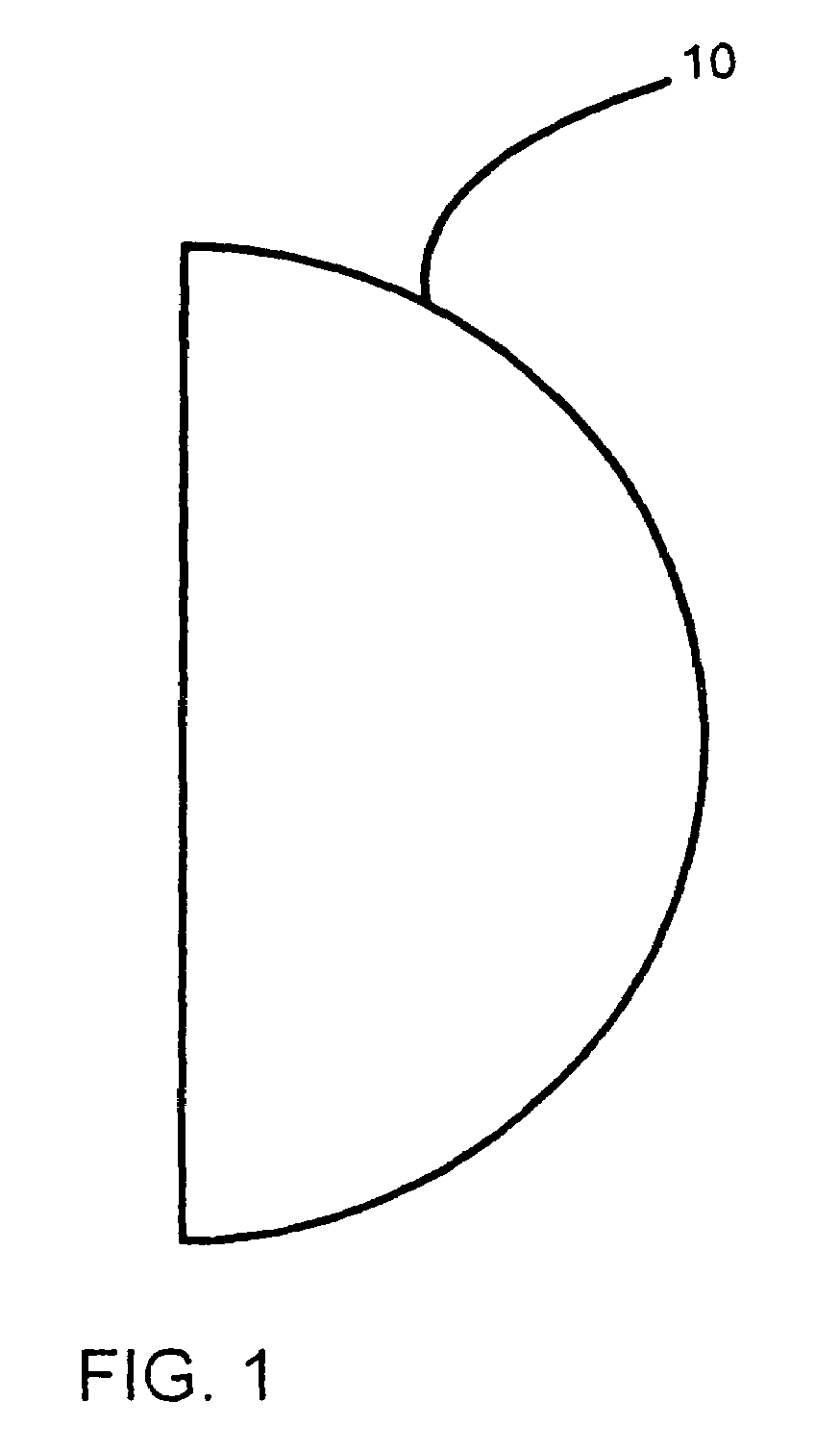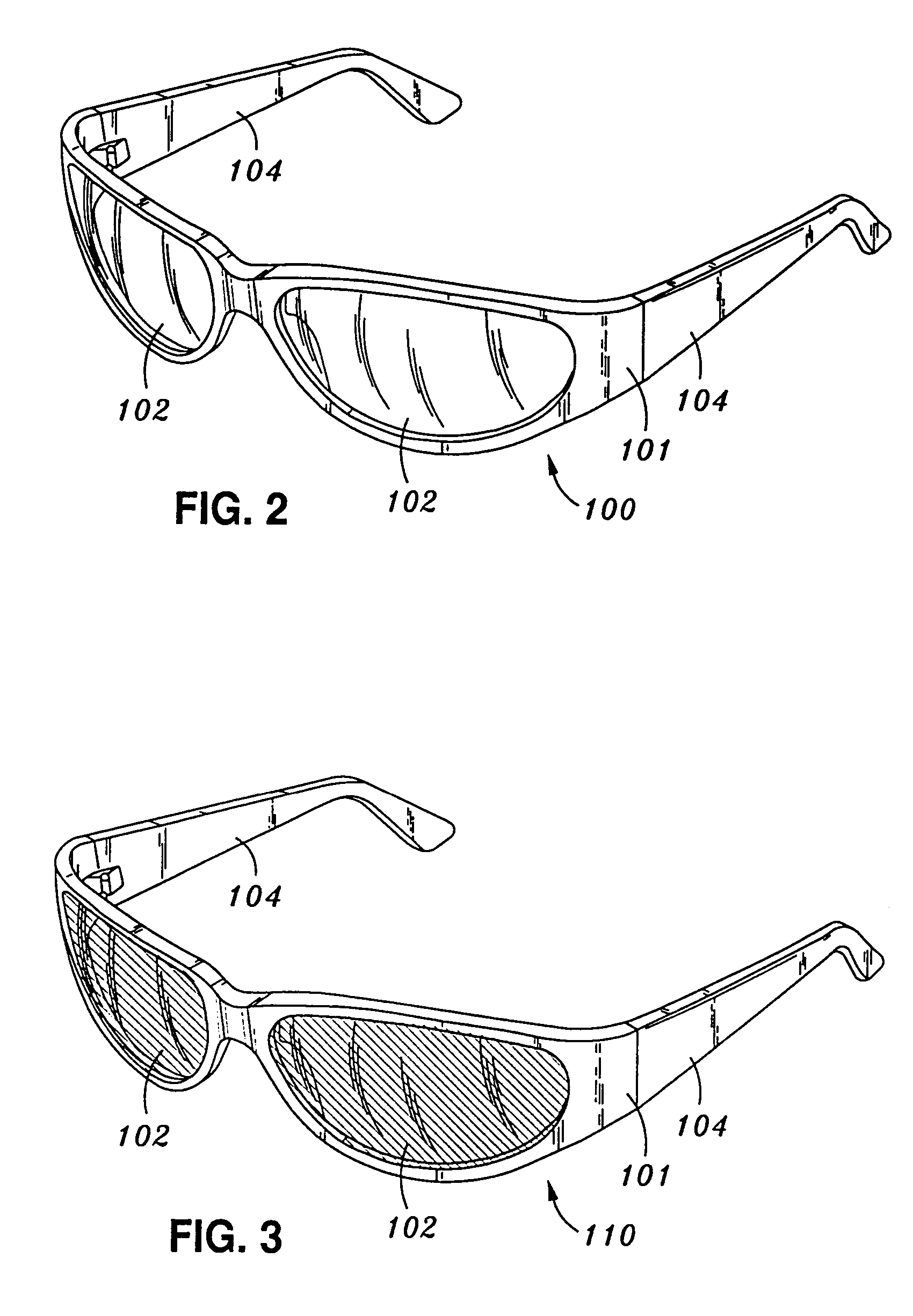Blue blocking tens
a technology of blue blocker and optical lens, applied in the field of optical lenses, to achieve the effect of maximizing visual acuity and blocking light wavelength transmission, reducing glare, and reducing contrast sensitivity
- Summary
- Abstract
- Description
- Claims
- Application Information
AI Technical Summary
Benefits of technology
Problems solved by technology
Method used
Image
Examples
Embodiment Construction
[0024]Referring now to drawings wherein the showings are for purposes of illustrating preferred embodiments of the present invention only, and not for purposes of limiting the same, FIG. 1 illustrates a surgically implantable synthetic intraocular lens 10 which is designed to minimize glare, contrast sensitivity, chromatic and spherical aberrations and color distortion while maximizing visual acuity and blockage of light wavelength transmission throughout the blue light spectrum. The lens 10 is surgically implanted as known in the art after removal of a diseased lens, or cataract, from the eye of a patient. Conversely, if the lens 10 is to be implanted without removal of the natural lens as indicated for correcting refractive errors, the lens 10, with necessary corrective attributes, is likewise implanted as known in the art. As earlier discussed, in addition to the danger associated with ultraviolet A, ultraviolet B, and infrared wavelengths, visible blue light (i.e., wavelengths a...
PUM
 Login to View More
Login to View More Abstract
Description
Claims
Application Information
 Login to View More
Login to View More - R&D
- Intellectual Property
- Life Sciences
- Materials
- Tech Scout
- Unparalleled Data Quality
- Higher Quality Content
- 60% Fewer Hallucinations
Browse by: Latest US Patents, China's latest patents, Technical Efficacy Thesaurus, Application Domain, Technology Topic, Popular Technical Reports.
© 2025 PatSnap. All rights reserved.Legal|Privacy policy|Modern Slavery Act Transparency Statement|Sitemap|About US| Contact US: help@patsnap.com



